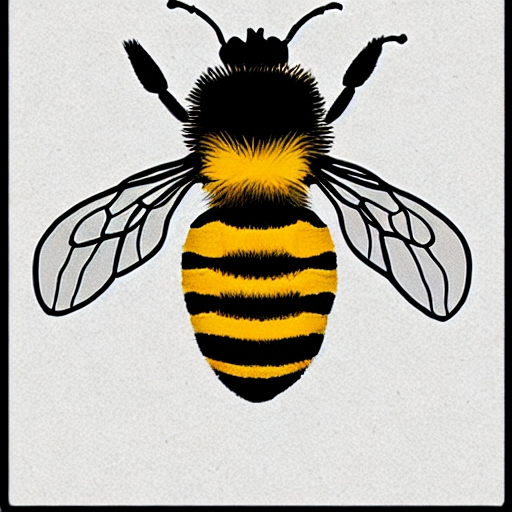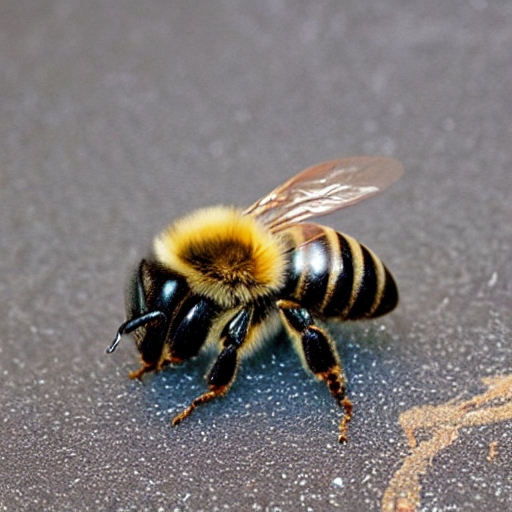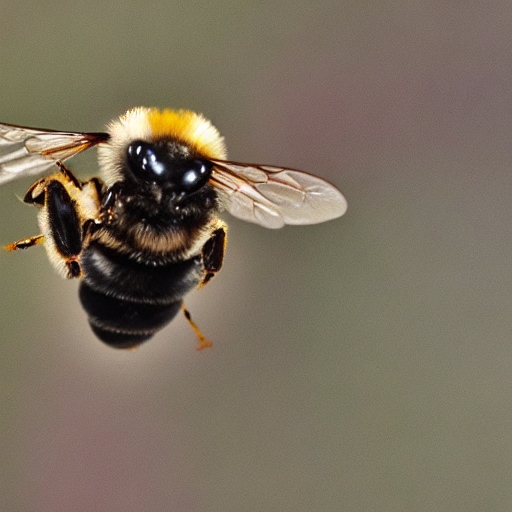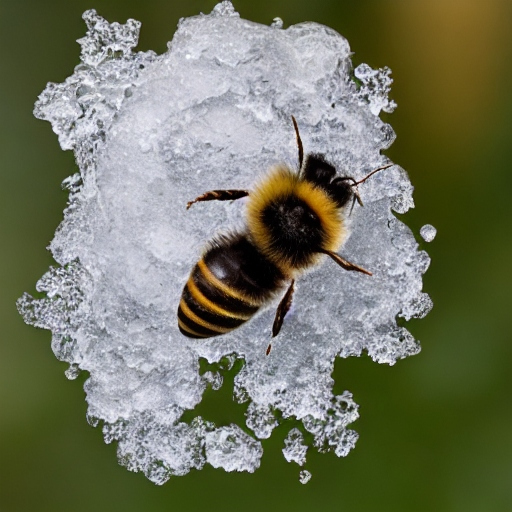Key Takeaways: Bee Anatomy and Respiration
- Unique Respiratory System of Bees
- Bees possess a specialized respiratory system distinct from mammals, relying on tracheal tubes instead of lungs for oxygen exchange. This efficient adaptation allows oxygen to reach cells directly, ensuring optimal functioning within their small but complex bodies.
- Tracheal Tubes and Spiracles
- Tracheal tubes serve as the primary conduits for oxygen delivery in bees, with spiracles acting as entry and exit points for airflow. This streamlined system enables bees to regulate oxygen intake effectively, supporting their vital activities such as foraging and nest construction.
- Adaptations for Efficient Respiration
- Bees demonstrate remarkable adaptations for efficient respiration, including rapid wing beating during flight to enhance oxygen intake and the ability to close spiracles to conserve water and prevent dust entry. These adaptations showcase the versatility and resilience of bees in diverse environmental conditions.
Discovering Bee Anatomy and Respiration

A Glimpse into the Tiny World of Honey Bees
Ever thought about how honey bees breathe? They’re known for pollinating and making honey. Their way of getting oxygen is different from ours. We use lungs, but bees have their own special way.
The Buzz on Bee Anatomy
Let’s delve into the world of bee bodies. The abdomen of a honey bee is not just for stinging; it plays a crucial role in their respiration.
Inside the bee’s body, there are small tubes called tracheal tubes. These tubes help with oxygen and carbon dioxide exchange. This exchange is crucial for the bee’s life. The bee’s breathing and blood flow systems work together. They help to make sure oxygen and nutrients get where they need to go in its small but complicated body.
Unveiling the Mystery: Do Bees Have Lungs?

Bees don’t have lungs like humans. They use thin tubes called tracheae to carry oxygen to their cells. Air goes into these tubes through small openings called spiracles on their sides.
The Role of Air Sacs in Bee Respiratory Function
Think of balloons inside balloons—that’s how bee air sacs work. They’re like balloons near the bee’s belly. They store air during flight and control airflow in the bee’s tubes. Bees can make these sacs bigger or smaller to get more oxygen when they need it. This may occur when they’re busy gathering nectar.
The Intricacies of How Bees Breathe Without Lungs
How do bees breathe without regular lungs? They use tiny holes called spiracles and special pumps in their bodies. This lets them take in oxygen and get rid of carbon dioxide, which keeps them alive.
Do Bees Have Lungs?
Bees do not have lungs like mammals

When pondering the question, “Do bees have lungs?” it’s fascinating to discover that these buzzing creatures do things a bit differently. Unlike us mammals, bees don’t rely on lungs to fuel their oxygen consumption. They possess a unique respiratory system that sets them apart in the animal kingdom.
Tracheal system for respiration
A honey bee’s breathing system relies on small tubes called tracheae. They work like our lungs but are much smaller. These tubes let bees take in oxygen without big air sacs. It’s amazing how well these tiny air sacs control airflow in bees.
The tracheal system delivers oxygen straight to cells without going through blood vessels. This direct route helps honey bees get enough oxygen for their busy tasks. These tasks may include ones like gathering nectar and building nests.
Each honey bee has about ten pairs of spiracles on its body. These small openings let in oxygen and let out carbon dioxide. Spiracles help bees breathe well and keep fresh air flowing through their bodies.
Worker bees depend on their tracheal system as they work hard in the colony. This system shows how well bees are built for living in different places. So, when you watch a bee, remember their cool way of breathing helps them do all their amazing tasks!
How Do Bees Breathe?

Air Enters Through Spiracles on their Bodies
When you stop to ponder the fascinating world of bees, one can’t help but wonder – how do these tiny creatures manage to take in the breath of life? Well, let’s start at the beginning. Bees have small openings called spiracles on the sides of their bodies.
These are like little windows through which fresh air can enter and exit. Picture a cozy window letting in a gentle breeze on a warm summer day. That’s how these spiracles work for our buzzing friends.
Now, imagine the honey bee taking a deep breath (or rather, a deep intake of air). As they go about their busy buzzing business, air swoops into these spiracles like guests entering a grand ballroom.
The bee’s body is precise, with each part working together for smooth airflow. It’s like nature made them a perfect breathing system, no bulky lungs needed!
Spiracles Lead to Tracheal Tubes
But wait, there’s more! Once the fresh oxygen makes its way through those spiracles, it embarks on an exciting journey through what are known as tracheal tubes.
These tubes are like tiny highways in the bee’s body, guiding oxygen to the cells. Imagine them as secret passageways to where the action happens.
The tracheal tubes wind through the bee’s body like lanes in a city, ensuring every cell gets oxygen. Nature has efficiently designed this system for our buzzing buddies.
Tracheal Tubes Deliver Oxygen Directly to Cells

The tracheal tubes deliver oxygen straight to every cell. Picture fresh oxygen molecules traveling through the tubes like eager messengers. The bee’s respiratory system is efficient and effective.
Efficiency and precision matter most. No complex lungs or tangled blood vessels are needed. They just have a direct path from spiracle to cell with tracheal tubes.
Spiracles let in oxygen, tracheal tubes deliver it where it’s needed. Bees are breathing masters without lungs.
Adaptations for Efficient Respiration in Bees
Rapid Wing Beating During Flight Enhances Oxygen Intake

When you see a bee flitting among flowers, its quick wing flaps do more than keep it in the air. Bees flap their wings fast to take in more oxygen.
The fast wing flapping makes bees need more oxygen for their flight. Their respiratory and circulatory systems work together to supply the extra oxygen needed.
The respiratory and circulatory systems of bees work together to get oxygen to all their cells. When bees fly, their circulatory system helps oxygen-rich blood from their hearts reach all parts of their bodies through small vessels.
This helps bees stay energetic while gathering nectar and pollen over long distances. Bees also use fast wing beating to regulate temperature and exchange gases. This helps them manage their energy needs during their tasks.
Their constant movement creates warmth, keeping them active in cool weather. It also helps them get rid of carbon dioxide from metabolism and take in fresh oxygen through their spiracles.
Ability to Close Spiracles to Conserve Water and Prevent Dust Entry

Bees are skilled at efficient breathing during flight and resource conservation. They can control the opening and closing of spiracles on their bodies. This helps them save water in hot weather and keep dust out of their respiratory system.
In hot or dry conditions, bees can close some spiracles to keep water from evaporating. This helps them stay hydrated and function well in tough environments.
Additionally, bees protect themselves from dust and infections by closing their spiracles. This defense helps keep out harmful bugs like tracheal mites that could harm their breathing.
Bees protect themselves by closing access points when they sense danger. This helps them continue their tasks safely. Bees have evolved to breathe efficiently, allowing them to thrive in different environments.
Fun Fact: Bee “Panting” Behavior
One fascinating aspect of bee behavior is their unique way of regulating body temperature and increasing oxygen flow through a process known as “panting.” When bees engage in this behavior, they perform rapid abdominal movements that help them maintain optimal conditions within their bodies.
Rapid Abdominal Movements
As bees work tirelessly within their colonies, there are times when the temperature rises or when they require more oxygen to support their activities. In response to these needs, bees exhibit rapid abdominal movements that resemble panting in other animals. These movements help increase air circulation around their bodies, facilitating cooling and enhancing oxygen intake.
Regulating Body Temperature

In hot weather conditions or during strenuous tasks such as foraging for nectar or defending the hive, bees can experience an increase in body temperature. By engaging in panting behavior, they effectively regulate their internal heat levels by expelling excess warmth through the rapid movement of their abdomens. This mechanism plays a crucial role in preventing overheating and maintaining optimal functioning.
Oxygen Flow Enhancement

Besides aiding in temperature regulation, bee panting also serves to boost oxygen flow throughout their bodies. The increased movement helps draw more air into the bee’s respiratory system, ensuring a steady supply of oxygen to fuel their metabolic processes. This heightened oxygen and air intake is especially vital during moments of heightened activity or when bees are facing environmental challenges.
Adaptation for Survival
The ability of bees to engage in panting behavior highlights the remarkable adaptability of these industrious insects. Through this unique mechanism, they have evolved a way to cope with fluctuations in temperature and oxygen availability that could potentially impact their well-being. This adaptation showcases how bees have finely tuned responses to maintain homeostasis and thrive in diverse environments.
The phenomenon of bee panting offers a captivating glimpse into the intricate ways these tiny creatures manage essential physiological processes. By observing this behavior, we gain insight into the resourcefulness and resilience of honey as bees survive, highlighting once again the marvels found within the intricacies of nature’s design.
Conclusion: How Bees Breathe Without Lungs
Recap of Bee’s Unique Respiratory Adaptations
Bees, remarkable creatures that they are, have evolved a fascinating respiratory system that sets them apart from other animals. Instead of relying on lungs like mammals, bees utilize a tracheal system for breathing. This intricate network of tubes delivers oxygen directly to their cells, allowing for efficient gas exchange without the need for traditional lungs.
Bee Breathing: A Marvel of Nature
The process by which bees breathe is a marvel of nature. Through tiny spiracles located on the sides of their bodies, bees intake air which then travels through tracheal tubes to reach their cellular tissues. This ingenious design enables bees to regulate airflow and optimize oxygen uptake, essential for their survival and exceptional work ethic within the hive.
The Optimistic Spin: Celebrating Bee Resilience
Despite challenges like tracheal mites and other threats to their respiratory and circulatory systems, honey bees and most insects that have shown remarkable resilience in adapting to adversity. Their ability to expel carbon dioxide efficiently while taking in essential oxygen highlights nature’s ingenuity in creating such finely tuned organisms. The dance of life within a bee’s body exemplifies adaptation at its finest, giving us hope and inspiration for overcoming our own obstacles.
The next time you see a busy bee buzzing around collecting nectar or pollinating flowers, take a moment to appreciate the intricate mechanisms at work inside its tiny body. The way a bee breathes may be different from ours, but it is no less incredible or vital for sustaining life on our planet.
Let’s marvel at the complexity of nature’s design and learn from these industrious insects about resilience in the face of challenges. Embracing the beauty and wonder found in even the smallest creatures can inspire us to approach our own obstacles with grace and determination.
Neutralize Bees with D-Termination: Las Vegas’ Leading Pest Control Solution!

Facing bee challenges on your Las Vegas property? Depend on D-Termination for expert support. Our skilled team is proficient in eliminating bee infestations, bringing back comfort and serenity to your space. Bid adieu to bees—choose D-Termination for efficient pest control today!
Reach out to us at 702-919-6310 or visit dtermination.com to schedule your bee control service and reclaim your space from these bothersome insects.
Frequently Asked Questions:
No, bees cannot survive without oxygen.
Bees do not have the capability to breathe underwater.
Bees and wasps do not have lungs; they respire through a system of tubes called tracheae.
Yes, bees have three stomachs: the honey stomach, the midgut, and the hindgut.







